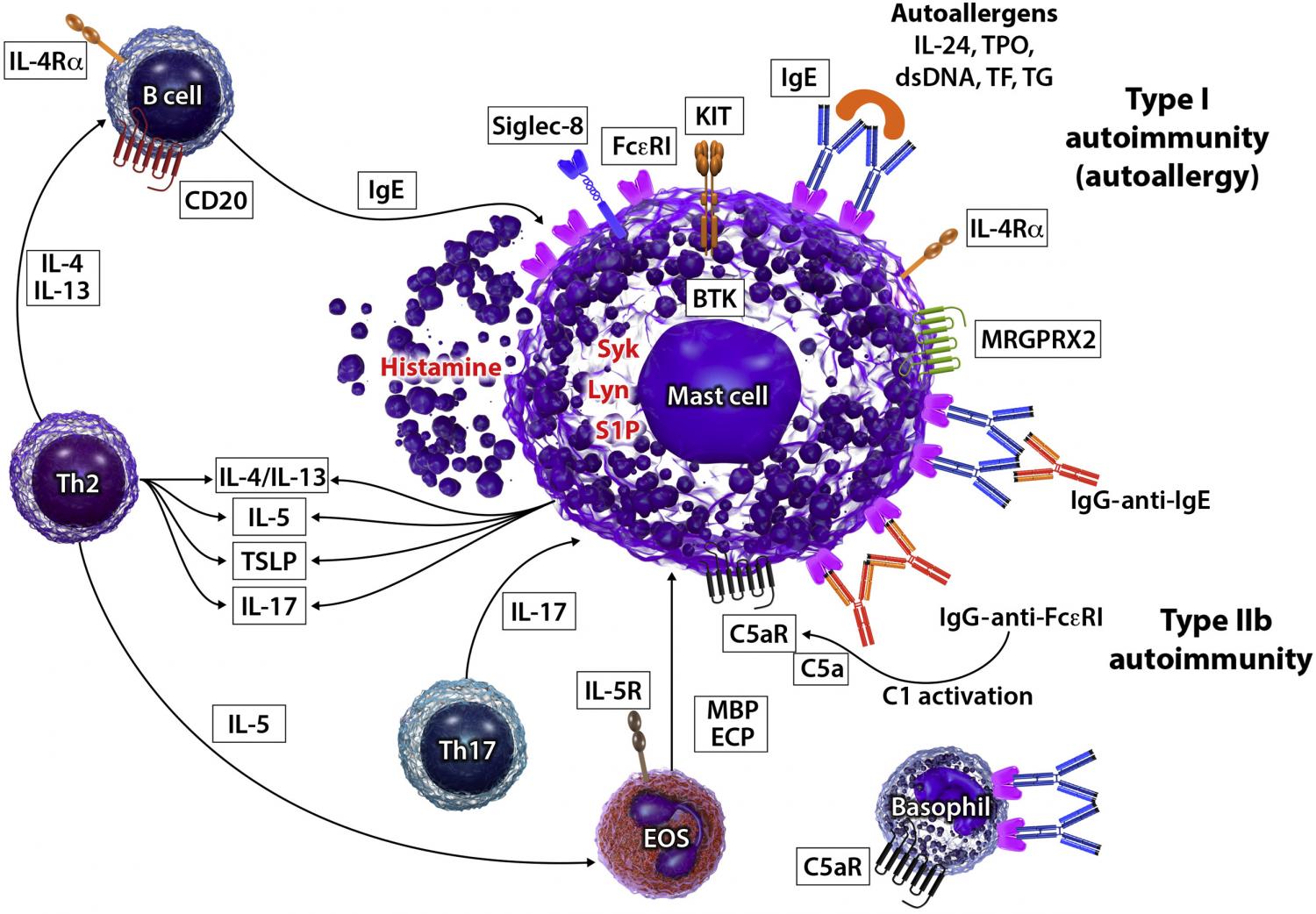
Chronic spontaneous urticaria (CSU) is a debilitating mast cell–driven disease characterized by recurrent wheals and/or angioedema. Substantial progress has been made in dissecting the 2 main autoimmune mechanisms that drive the pathogenesis of CSU. Type I autoimmune (autoallergic) CSU is associated with IgE antibodies against autoantigens, for example, thyroid peroxidase and IL-24. Type IIb autoimmune CSU is mediated by autoantibodies that activate mast cells, for example, via IgE and FcεRI, and is present in less than 10% of patients with CSU when strict criteria are used, that is, triple positivity of autologous serum skin test, immunoassays for IgG autoantibodies, and basophil activation tests. A subpopulation of patients with CSU has both types. Type IIb autoimmune CSU is characterized by higher disease severity, concomitant autoimmune diseases, low levels of total IgE, elevated levels of IgG-anti–thyroid peroxidase, basopenia, eosinopenia, poor response to antihistamines and to omalizumab, and a good response to cyclosporine. Novel targeted therapies for CSU are under development such as ligelizumab, an anti-IgE, fenebrutinib and remibrutinib, Bruton's tyrosine kinase inhibitors, and dupilumab, an anti–IL-4Rα. Further studies should investigate the overlap between autoallergic and type IIb autoimmune CSU, optimize the diagnosis of both autoimmune endotypes using easy-to-perform, noninvasive, and inexpensive markers, and assess differences in response to therapy.
